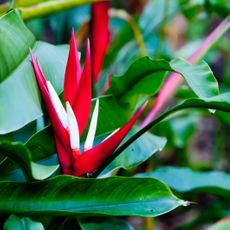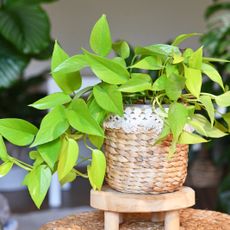The Benefits Of Pinching Herbs: Why It Matters And How To Do It Right
Frequently pinching herbs back encourages a healthier, bushier growing habit. It doesn't work for every type of herb, but most will benefit from it.


Herbs are herbaceous perennials or annuals that generally grow in a bushy, clump-forming habit. They can quickly get leggy, meaning their stems grow long and spindly, producing fewer leaves. Because you generally grow herbs for the leaves, you want to take steps to help them grow bushier and fuller.
Pinching out herbs by plucking off growth might seem counterintuitive, but it will actually encourage full growth. Knowing how to pinch basil and similar herbs will help keep them bushy, healthy, and productive.
The Importance of Pinching Back Herbs
Far from being detrimental to an herb’s growth, pinching back stems is necessary for optimal growth for several reasons:
- Pinching back stems promotes bushier growth. When you pinch the top off a stem, two more grow laterally from the dormant buds just below the pinch point.
- This, in turn, reduces legginess, keeping herbs from getting too tall with spindly growth.
- The lateral growth produced by pinching makes an herb plant more productive, giving you a bigger harvest.
- Pinching also delays flower formation, which gives you a longer season for harvesting the tastiest leaves as the plant puts energy there instead of in blooms and seeds.
If you don’t pinch back your herbs regularly, you’ll still get a harvest, but it will be less and shorter as the plant starts to put its energy into making flowers.
Which Herbs Benefit from Pinching?
Pinching herbs isn’t suitable for every type, but many benefit from this practice:
- Basil - Pinching basil gives you a nice, full plant and delays flowers. Wait until the plant is at least six inches (15 cm) tall, and remove tips whenever the stems have six to eight leaves.
- Oregano - Pinch oregano stems every two to three weeks and remove flowers as soon as you see them.
- Mint - Pinch back mint stems when they are 4 to 6 inches long (10 to 15 cm). Remove flowers.
- Sage - Start pinching sage tips when stems have at least four sets of leaves. Regularly pinch back the longest stems.
- Thyme - Pinch off the tips of thyme stems regularly. You can remove up to half of the length of stems as they get long.
- Rosemary - Prune rosemary by pinching off the tips of young stems. As it gets bigger, pinch back the longest stems by no more than a third of their length.
When and How to Pinch Back Herbs
Pinching herbs is simple and easy. Look for a dormant leaf bud on a stem. It looks like a small knob. Use your fingers to pinch off the stem just above this node. This signals the dormant bud to grow into two lateral stems. Where you had one stem, you now have a point at which two stems branch out.
Start pinching your herbs when they are 4 to 6 inches (10 to 15 cm) tall and have at least four mature leaves on a stem. If there are four leaves, you can pinch off the top two to trigger lateral growth. Keep pinching regularly throughout the growing season for maintenance and to harvest leaves for use.
Gardening tips, videos, info and more delivered right to your inbox!
Sign up for the Gardening Know How newsletter today and receive a free download of our most popular eBook "How to Grow Delicious Tomatoes."
For most herbs, it’s also important to pinch off the flowers as soon as they develop. This keeps the energy in leaf production and ensures the leaves still have a good flavor.
When You Shouldn’t Pinch Herbs
There really is no wrong time to pinch your herbs as long as they have grown enough. You almost can’t remove too much, but a good general rule to keep your plants healthy and thriving is to remove no more than one-third of their growth at a time.
Another situation in which you do not want to pinch is when you’re growing an herb for flowers or seeds. Pinching back discourages flowering. If you are growing lavender, for instance, you probably don't want to harvest the leaves, so you can just let it grow. At the end of the season, you might want to stop pinching so you can get flowers and collect the seeds to use next year.
Frequently Asked Questions
Should I Pinch The Flowers Off Herbs?
If you are growing an herb for its leaves, you should pinch off the flowers as soon as you see them. The quality of the leaves’ flavor decreases as the plant blooms. Do not pinch flowers if you are planning to harvest them or their seeds.
Can I Pinch Herb Plants at Any Age?
Avoid pinching herbs that are very young. Let them grow a few inches tall and produce at least two sets of mature leaves per stem before you begin pinching and harvesting.

Mary Ellen Ellis has been gardening for over 20 years. With degrees in Chemistry and Biology, Mary Ellen's specialties are flowers, native plants, and herbs.
-
8 Pothos Varieties Every Plant Lover Should Add To Their Collection
Step up your houseplant game with these eight pothos varieties hand-curated by us.
By Bonnie L. Grant
-
 How To Grow Christmas Heliconia Plants
How To Grow Christmas Heliconia PlantsForget poinsettias. Heliconia Angusta will bring your plenty of holiday cheer with its bright tropical flowers.
By Tonya Barnett




